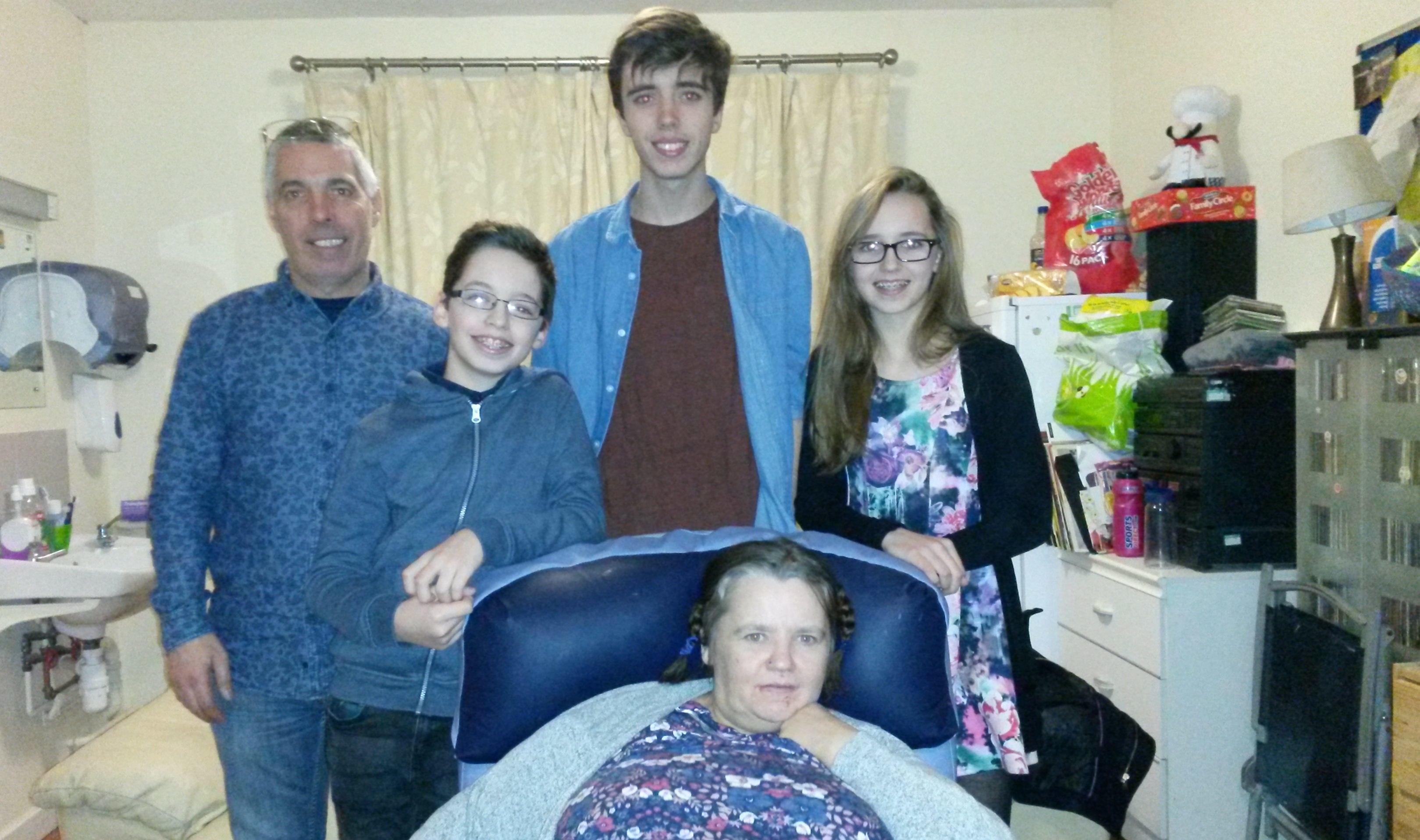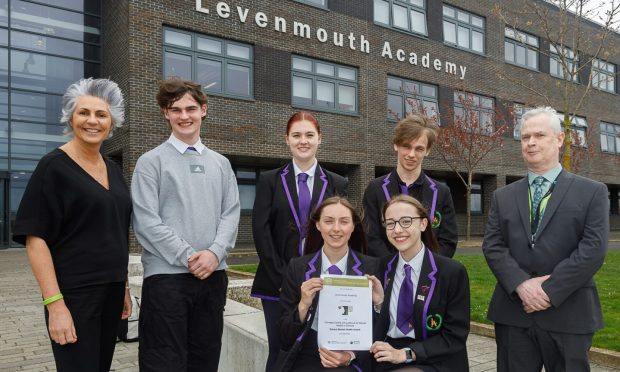A brave Fife teenager is living with a ticking time bomb.
Two generations of Cameron Newport’s family have been struck down by Huntington’s Disease and the 17-year-old Rosyth student does not know if it has been passed down to a third.
Cameron, who has a 50:50 chance of having inherited the debilitating condition, now has a year to decide whether ot not he will be tested.
When he turns 18 he will be able to choose whether to be tested.
He has told his heartbreaking story as part of Genetic Disorders UK’s Jeans for Genes day.
The courageous youngster has already seen his grandfather die of the condition and his 43-year-old mother Wendy is in a care home.
Cameron, who lives with father, Alex and siblings Declan, 13, and Tiffany, 12, first became aware that the incurable disease was in his family when he was aged three and his maternal grandfather was ill.
He said: “I always thought that when I got to 18 I would want to have the test to see if I carry the defective gene.
“Now I’ve have been put off from doing it. If I knew I had it, how would I deal with that?”
He said it was a huge amount of pressure on someone so young and praised the support from the Scottish Huntington’s Association.
It has offered help, a youth workers and takes youngsters on a summer camp.
He also attends a group for those who have Huntington’s in their family.
“We are all there because we have the same thing in common, we can all relate to each other.”
Wendy showed the early symptoms when her family was young.
Cameron, who hopes to study politics or history at university, said: “She’s been ill so long, it’s all I can remember, so it wasn’t a shock when she got the diagnosis in 2010.”
She showed symptoms for years, but they did not become severe until Cameron was around 10.
His parents split up about 12 years ago and the teenager said the stress of his mother being unwell was a factor. The children stayed with her initially but moved in with their father as Wendy’s condition deteriorated.
He said: “HD wasn’t a secret in our family but we didn’t talk about it much. For her, she lived with the fear of seeing her dad like that. It was evident mum had it too.
“She would act erratically so it raised suspicions. The symptoms got a lot worse and now she is going downhill.”
Wheelchair-bound Wendy needs round-the-clock care.
Cameron said: “She is well looked after.
“It’s not easy seeing her getting worse, but I know she is well cared for.”
He praised his father, adding: “He does a great job and I’m very proud of him.
“We are very lucky to have him.”
An incurable killer
Huntington’s Disease is a progressive neuro-degenerative disorder.
Causing brain cells to die off, early symptoms include mild tremors, clumsiness, irritability, mood changes and depression.
As it progresses, symptoms include severe personality and behavioural changes, depression, difficulty eating, speaking and walking and involuntary limb movements.
Sufferers normally deteriorate over a 10 to 25 year period from when it first appears, before the person eventually dies from it.
During the condition’s later stages, the person will be totally dependent and need full nursing care.
There is no cure and treatment is only to ease symptoms. A UK study in 2012 found 12 people per 100,000 are affected by Huntington’s Disease.
The most common age to show symptoms is from 30 to 50 and if you have a parent affected you have a 50:50 chance of inheriting the disorder.
Testing is not available until the age of 18, after genetic counselling.
Cameron is helping to raise awareness of genetic disorders with the UK charity Genetic Disorders UK and its annual fundraising day, Jeans for Genes Day.
This year, Jeans for Genes Day is on Friday September 22 and invites everyone to wear their jeans to work or school in return for a donation at www.jeansforgenesday.org











